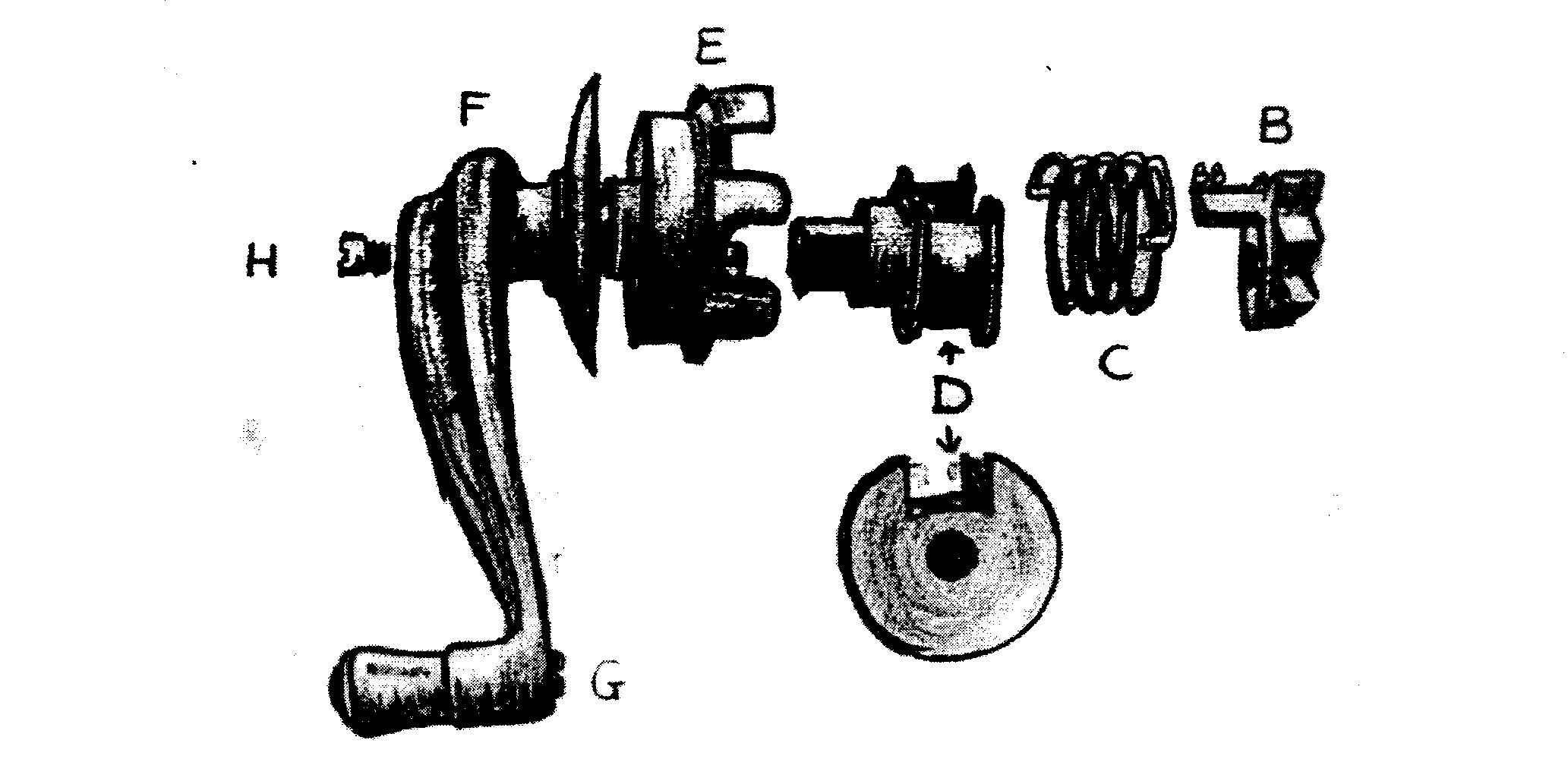
REPAIRING THE A7 WINDOW WINDER MECHANISM
With a dull click my window disappeared down into the door recess
of my Seven. On all previous occasions there had always been about an inch
showing above the aperture in the door-frame. When I then attempted to wind-up the window to close it the whole
lot speedily descended whilst at the same time the window handle pirouetted
gracefully clockwise. What had gone wrong?
To gain access to the inner workings of the window-winding gear
the door skin has to be removed. This is achieved by removing the handle (F) by
unscrewing the retaining screw (H). Next, release in any order - the door
chain, the handle which is pulled to close the door, the lock mechanism and the
pins which hold the oilcloth covered plywood to the door frame. With a
downwards and outwards pull this will come away from the door and leave exposed
the winding mechanism. In unrestored cars this is the time to notice
deterioration around the bottom edge of the
door. The ply-wood may have woodworm or just senile dementia and it is most
likely that the door skin itself will be in a poor state where it is folded
under to receive the framework for the door.
The mechanism is located on a plate which is held in place by four
screws. In earlier models these are set into captive bolts but in my '37 Pearl
the plate is screwed directly into the woodwork of the door frame. Before
unscrewing these four fixings it is a good idea to mark the relative positions
of the cogs and arms of the mechanism. This will assist with reassembly! Once
released the winding gear can then be lowered making it possible to slide the
two runners out of the channel under the window glass leaving the window itself
still in place.
Next
comes the tricky bit. The drum (E) is attached to the main plate by five lugs
which must very carefully be prized open. Take your time with this operation so
as not to break them off - we are not dealing with a pliable metal.
Once straightened out a few gentle taps on each of them in turn
will disclose the essential inner workings of the mechanism. At this stage
there should be four separate, loose items - the drum (E), the spool (D) with
its spring (C) and a small cog-wheel (B) which has five cogs and a lug
attached. This cog revolves around a spindle (A) which is attached to the
backplate by a rivet. It may be necessary to give the square arm on (E) a
gentle tap to release the spool and spring.
It is the spring (C) which is usually broken. At each end the
spring should be bent inwards at right angles as shown in the diagram (J). It
is one or both of these ends which will be found to have broken. The lug on (B)
presses on these parts of the spring when the weight of the window is received
by it through the cogs and this has the effect of opening out the coiled
spring. This in turn jambs the spring, like a brake shoe, against the inside of
the drum (E). However, when the handle (F) is employed, the spring tends to get
wound up, thus reducing its diameter allowing the spool to revolve inside the
drum to enable the operator to raise or lower the window.
Bart
Walsh, EA7C
This article first appeared in CHASSIS,
Magazine of the Essex A7C